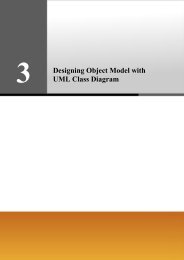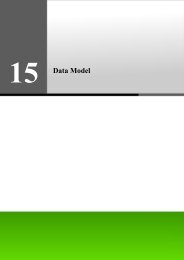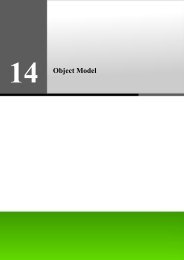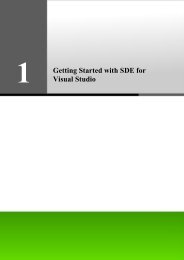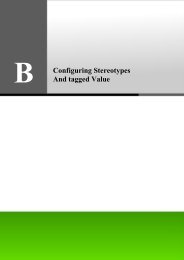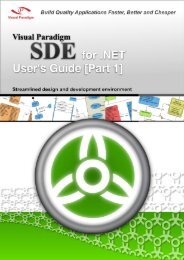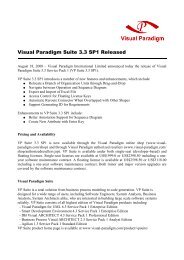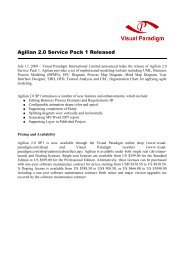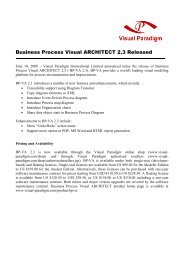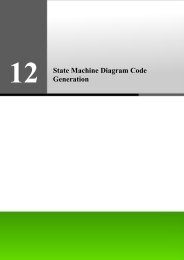Chapter 18 - Data Model - Visual Paradigm
Chapter 18 - Data Model - Visual Paradigm
Chapter 18 - Data Model - Visual Paradigm
You also want an ePaper? Increase the reach of your titles
YUMPU automatically turns print PDFs into web optimized ePapers that Google loves.
SDE-VS User’s Guide (Part 2, for ORM) <strong>Chapter</strong> <strong>18</strong> –<strong>Data</strong> <strong>Model</strong><br />
Mapping Array Table to Collection of Objects<br />
The Array Table is promoted to allow users retrieve objects in the form of primitive array.<br />
When transforming an array table, the array table will map to an attribute with array type modifier.<br />
Example:<br />
Figure <strong>18</strong>.57 - Mapping Array Table to Collection of Object<br />
In the above example, the phonebook has a contact entry for each contact person. Each contact person may have more than one<br />
phone numbers. The array table of ContactEntry_Phone maps into the phone attribute with array type modifier in the<br />
ContactEntry class.<br />
Mapping <strong>Data</strong> <strong>Model</strong> Terminology<br />
The following table shows the shift from data model to object model terminology.<br />
<strong>18</strong>-24<br />
<strong>Data</strong> <strong>Model</strong> Term Object <strong>Model</strong> Term<br />
Entity Class<br />
Instance of an entity Object<br />
Relationship Association<br />
Supertype/subtype Generalization<br />
Column Attribute<br />
Phrase Role<br />
Cardinality Multiplicity<br />
Table <strong>18</strong>.6




